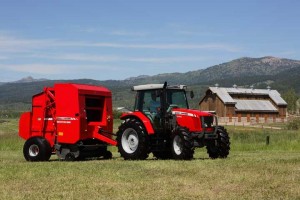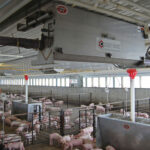End-of-Season Maintenance Key to Hay Equipment Performance
Haying equipment end-of-season inspection and maintenance checklists; a few simple steps before storing for the winter are keys to machine performance and long life. After a long summer in the hayfield, it’s tempting to simply back haying equipment into the shed...
End-of-Season Maintenance Key to Hay Equipment Performance
Haying equipment end-of-season inspection and maintenance checklists; a few simple steps before storing for the winter are keys to machine performance and long life. After a long summer in the hayfield, it’s tempting to simply back haying equipment into the shed... Haying equipment end-of-season inspection and maintenance checklists; a few simple steps before storing for the winter are keys to machine performance and long life.
Haying equipment end-of-season inspection and maintenance checklists; a few simple steps before storing for the winter are keys to machine performance and long life.
After a long summer in the hayfield, it’s tempting to simply back haying equipment into the shed for the winter without giving it a second thought. However, conducting a thorough end-of-season inspection and writing down maintenance needs while they are still top of mind can be time well spent.
That’s the advice of Dean Morrell, product marketing manager for Hesston by Massey Ferguson hay products and 35-year-veteran of the quality hay business.
“A full end-of-season visual inspection helps ensure you’re well prepared to complete needed repair and maintenance projects during winter downtime,” says Morrell. “Months down the road it can be hard to remember that noise you wanted to check out before next season. By writing it down, you have a big head start on maintenance that will leave your equipment in top condition, ready for another productive season.” Good machine care, with proper maintenance and repair not only helps ensure proper operation and long life, it helps maintain resale value, Morrell points out.
A clean machine simplifies fall maintenance and inspection. It also helps minimize rust which can start where dirt and moisture collect on a machine.
Begin with removing dirt, dust and hay debris by sweeping the machine or using high-pressure air or a power washer. While balers often carry the most dirt and hay material, it’s best to use air when cleaning balers because of their many moving parts and opportunities to create rust. High-pressure washing is best for cleaning mower or conditioner cutter bars. Rakes as well as self-propelled and pull-type windrowers can be pressure-washed to remove dirt, dust and hay debris.
Although some maintenance tasks can be deferred until winter, at a minimum, grease machines and change oil and filters before parking. Balers and self-propelled windrowers typically require the most care before going into winter storage. Rakes generally require minimal maintenance, but it’s still important to give them the attention they need before storing for the winter, says Morrell. He offers these “quick tips” for end-of-season maintenance and reminds producers to follow the operator’s manual and manufacturer’s recommendations.
Within the next days we will share more tips on how to prepare for end-of-season maintenance for your baler, rake, and windrower.
For more information about Hesston by Massey Ferguson products or to find a dealer near you, visit www.Hesston.com.



